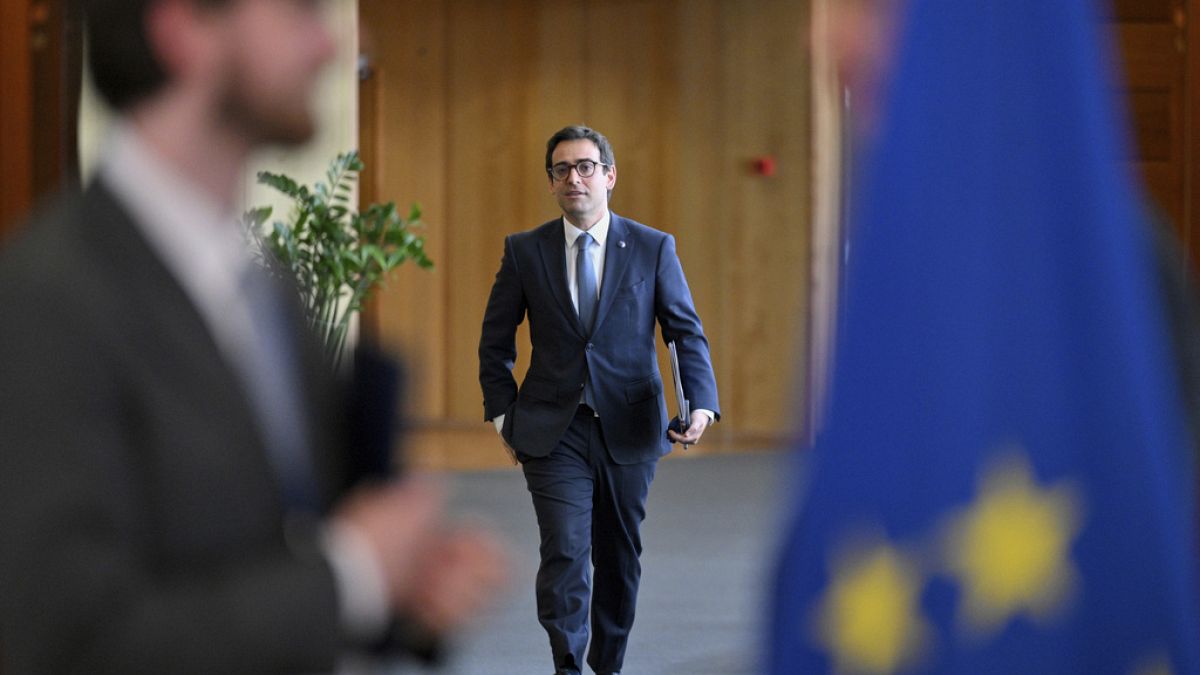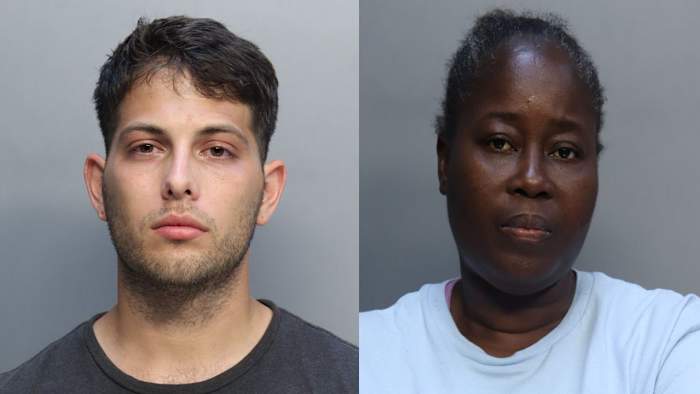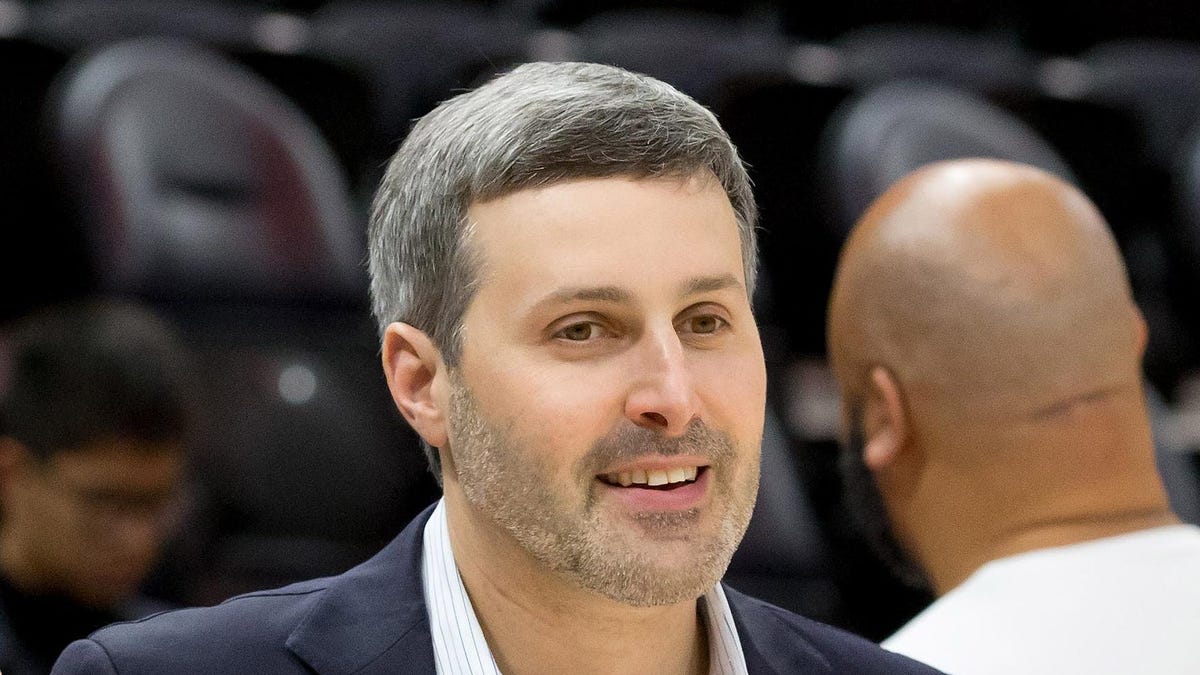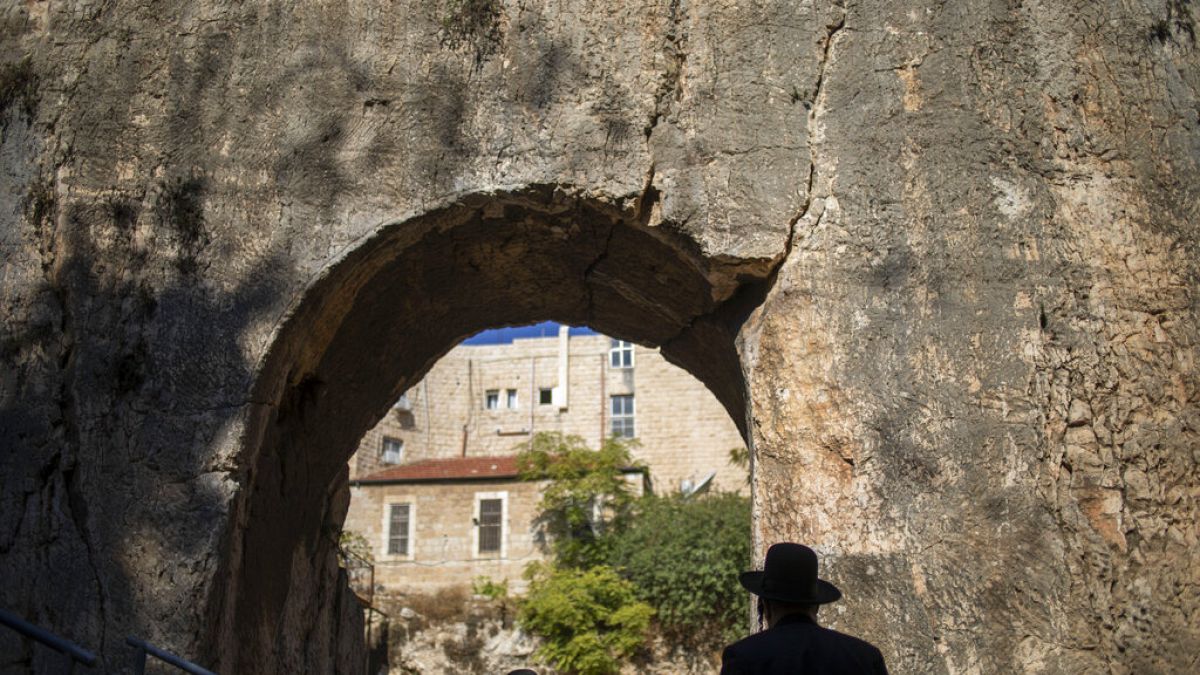Alaska
Federal funding set to help state test drinking water systems for contaminants
/cloudfront-us-east-1.images.arcpublishing.com/gray/V4YMLQJDYREB7IEE3TH2WVNPXE.JPG)
ANCHORAGE, Alaska (KTUU) – Federal grant money will soon be put to work through a new drinking water monitoring program designed for implementation across Alaska.
The Environmental Protection Agency’s Emergency Contaminants Tribal Drinking Water grant allocates $494,000 to Alaska for the primary goal of getting funding to Alaska Native villages to monitor per- and polyfluoroalkyl substance levels in public water systems.
“We will be determining what the level, if there is any presence of PFAS, if there is a level, what that level is,” said State of Alaska Drinking Water Program Manager Cindy Christian, “so that then we can provide technical and compliance assistance to each one of those communities to treat for that contaminant.”
Christian said the money won’t be allocated to individual communities. Instead, the DEC Drinking Water Program will be paying for the PFAS water sampling in each community with the grant money. The samples will then be shipped and analyzed by a special certified drinking water laboratory.
According to the State of Alaska Department of Environmental Conservation, the testing will be for 29 different chemicals that are considered contaminants, so that a baseline of contamination levels in villages across the state can be established. Then, the DEC and EPA are to work together to figure out more precise next steps.
PFAS have largely been associated with the use of aqueous film-forming foams, often used during firefighting and fire training activities and at airports around Alaska. Testing public water systems is meant to be a major step toward combatting contamination, and ensuring that potential PFAS levels aren’t making water sources unsafe for use.
The program is especially important in a place such as Alaska because of consistent sources for releases of PFAS and how that can affect the environment and humans in the area, such as firefighting activities and the high number of airports in the state.
“It depends on the use of the firefighting foams, it depends on the proximity of the airport or where they were used,” Christian explained, “so it’s really hard, and that’s why we want to collect the data, because right now we don’t know, and we won’t know unless we collect the data, so that’s what this whole sampling project is about.”
According to the DEC, the plan is to start testing in August and then get through each of the 193 included communities by the end of 2024. Christian said that another pot of money that is available may be used for testing an additional group of more than 400 Alaska water systems in the future.
Copyright 2023 KTUU. All rights reserved.

Alaska
Missing family's boat found in Alaska waters along with human remains

ANCHORAGE, Alaska — Nearly a year after the U.S. Coast Guard suspended the search for a family of four missing after the boat they were on capsized in waters off south-central Alaska, the vessel along with human remains have been found, officials said Wednesday.
The discovery came after three private Alaska companies, including one that uses sonar equipment to search underwater, offered in April to help look for the family, who are from Texas, according to a statement released by the Alaska Department of Public Safety.
Earlier this month, they found the missing boat along with human remains in 180 feet (55 meters) of water in Kachemak Bay near Homer, the department said.
Divers from the state were then able to recover three sets of remains from the sunken vessel during dives on Tuesday and Wednesday.
The remains have been taken to the State Medical Examiner’s Office to perform autopsies and identify them, according to the public safety department. It did not say how long identifying the remains would take.
The missing family from Troy, Texas, includes Mary Maynard, 37, and David Maynard, 42, along with sons Colton, 11, and Brantley, 8, according to the statement.
The search for the family was launched in August after a report came in that a 28-foot (8.5-meter) aluminum boat carrying eight people had begun taking on water, the U.S. Coast Guard said at the time. The Coast Guard notified other ships in the area of the situation, and a boat nearby rescued four people.
The Coast Guard scoured Kachemak Bay and Alaska search and rescue crews tried to use sonar equipment to find the family, according to the state’s public safety department. But they were not successful and by the next evening, the search was suspended.
Christi Wells, who provided a statement on behalf of Mary Maynard’s parents at the time, said the family enjoyed spending time with friends and relatives, and traveling, according to the Anchorage Daily News. Mary Maynard was a traveling nurse and David Maynard stayed at home with the children and had a lawn care business, she said.
Alaska
'Come to the dark side': California inmate used lawyer in Alaska fentanyl empire, feds say

Before he worked for what he allegedly called “the cartel,” Justin Facey’s law career was unremarkable.
Facey’s modest solo practice was based in a gray Anchorage office building, where he shared space with personal injury attorneys, a chiropractor and a financial advisor. His website advertised expertise in defending run-of-the-mill cases: DUI, domestic violence, theft, assault.
But in 2023, Facey took on a client who changed his firm’s fortunes — and brought him under the eye of the U.S. Drug Enforcement Administration. Agents were monitoring the phone of a California inmate who was suspected of trafficking huge amounts of drugs to Alaska when they read a text message that Facey allegedly sent to a fellow lawyer.
“Come to the dark side,” he wrote in the message, which was cited in court documents. “I just signed a lease on a HUGE new office space. Three attorney offices, plus a paralegal bullpen, reception area, etc.”
Prosecutors say Facey broke the law working for Heraclio Sanchez Rodriguez, who has been serving a life sentence in California since 1998. Last week, Facey, 44, was charged with maintaining a “drug-involved premises,” as well as possessing a shotgun, rifle and two handguns while selling meth and fentanyl.
A lawyer for Facey, who has pleaded not guilty, didn’t immediately provide a comment.
From his prison cell in Monterey County, Sanchez, 58, used contraband cellphones to direct one of the largest drug trafficking organizations in Alaska history, federal authorities say. More than 60 people are accused of colluding with Sanchez to smuggle fentanyl, methamphetamine and heroin from Southern California to Alaska, where the narcotics were sold at staggering markups.
Sanchez has pleaded not guilty to charges that he trafficked drugs, laundered money and had two women kidnapped, murdered and buried in the Alaskan wilderness.
Facey acted as consigliere to Sanchez and, after his law license was suspended in February, became a drug dealer himself, prosecutors wrote in a motion seeking to jail the attorney pending a trial.
According to prosecutors, Facey began working for Sanchez in June 2023, around the time that the DEA tapped the prisoner’s cellphone.
Agents intercepted text messages in which Facey and Sanchez talked about using a private plane to spirit away an underling who had narrowly avoided arrest in Anchorage, prosecutors wrote in the bail motion.
Facey said he knew a pilot who could fly her to Montana. “Let me contact my people to be ready to take her out the country,” Sanchez replied.
The attorney later thanked Sanchez for having a package of fentanyl delivered to his home, prosecutors wrote. “I feel funny not paying — we can credit it for when you need some legal work done, if you want?” Facey wrote in a text message.
The lawyer and prisoner also allegedly discussed using laundering drug profits. In a text message cited by prosecutors, Facey complimented Sanchez for using “girls” as a “little revenue laundromat.”
Sanchez is accused of ordering the murder of Sunday Powers, an Alaskan woman who was caught at an airport carrying $20,000 of Sanchez’s money.
With Sanchez as a client, Facey bragged about his newfound wealth to “anyone in the Anchorage community who might listen,” prosecutors said in the bail motion.
In a text message, Facey allegedly wrote: “The cartel has retained my office for all their Alaska needs. So there’s guaranteed revenue, in cash, at the full hourly rate for the forseeable future.”
Facey said after he got a member of “the cartel” acquitted, “There was a knock on my door. Package sitting right there when I opened it. Inside was a watch manufactured by a very reputable purveyor of timepieces, two ounces of legit Bolivian flake and a brochure for the suite level at the Venetian.”
-
Share via
Imprisoned in California since 1998, Heraclio Sanchez Rodriguez is now accused of leading one of the largest drug trafficking networks in Alaska’s history.
Despite the boasts, Facey’s practice was collapsing. Clients filed 13 “grievances” and six payment disputes with the Alaska state bar about Facey, who had an ounce-a-day meth habit, prosecutors wrote in the motion to keep Facey jailed.
Facey also engaged in “compulsive sexual misconduct,” prosecutors wrote. An unnamed witness told authorities the lawyer was a “pig” and “disgusting slob” who extorted sex from her in exchange for legal representation, according to the motion to prevent his release.
After his license was suspended, Facey turned to selling drugs, according to prosecutors. By April, he told associates in text messages he was facing eviction. He posted in a public Facebook group for R.V. owners, writing, “Heya! I’m right in the middle of an unexpected, abrupt major life and career implosion, and I’ve decided to embrace the silver lining.”
He was thinking of selling everything he owned but his R.V., he wrote. Accompanied by his daughter and granddaughter, he’d leave Alaska “with no specific plan in mind but to roam the earth for a bit,” he wrote, “until something or somewhere grabs our attention.”
Facey is now in jail after a judge tentatively denied him bail. His lawyer will argue for his release in a detention hearing scheduled for Thursday.
Alaska
University of Alaska president reports $50M in grants frozen under Trump administration, warns of cuts to staff

The administration of President Donald Trump has suspended and canceled more than $50 million in funding at the University of Alaska, university President Pat Pitney told the Board of Regents this month.
Pitney also warned regents at the board’s two-day meeting last week in Fairbanks that the statewide system faces the possibility of future staff cuts in programs that receive high levels of federal grants.
The statements came as the regents approved the coming fiscal year’s operating and capital budgets.
The operating budget’s $352 million in unrestricted general funds represents an increase from last year. But it does not keep pace with rising costs, Pitney told regents.
Constrained state funding is also adding to pressure on the university, Pitney told the regents.
On the bright side, enrollment is growing with help from the Alaska Performance Scholarship and the university’s affordability, she said. (Alaska legislative leaders have recently approved a plan that could lead to a draw from the account that pays for those scholarships to help close a $200 million budget shortfall. The decision, and the budget bill, currently sits on the desk of Gov. Mike Dunleavy, who could potentially veto the item.)
“The Board has intentionally adopted a budgetary approach that balances fiscal restraint with specific investments in our university system, and that approach continues to yield positive results, including institutional stabilization and enrollment growth,” Board Chair Ralph Seekins said in a statement from the university.
“As the state budget environment contracts and uncertainty at the federal level remains, the board will continue working” with university leaders to maintain progress on student enrollment and success, he said.
Canceled and frozen grants
About $5.6 million worth of federal grants have been canceled, said Jonathon Taylor, a spokesperson for the university, in an interview last week.
The cancellations include a $2.5 million grant over five years for the Alaska Native Science and Engineering Program, Matt Calhoun, the program‘s executive director, said in a notice.
The National Science Foundation grant is one of the program‘s largest grants, the notice said.
The cancellation was “unexpected and untimely” and required canceling the program‘s summer Acceleration Academy, he said. Five other summer programs remain in place, he said.
ANSEP will look for new funding sources to strengthen the academy in coming years, Calhoun said in the letter.
Another $50 million in federal grants is frozen, Pitney told regents.
They include a $46 million, 10-year grant from the Department of Homeland Security for the Arctic Domain Awareness Center-ARCTIC Center of Excellence housed at the University of Alaska Anchorage, Taylor said.
Initial projects for the program include detecting emergency calls from mariners and researching renewable and nuclear energy options, the university said in a statement last year. New and existing academic programs were also planned through an interdisciplinary Arctic Security graduate degree and student fellowship program, the statement said.
Pitney told regents the program is in wait-and-see mode.
The university is working with the Department of Homeland Security to find a way to allow the grant to continue, Taylor said.
About $21 million in previously frozen federal grants for a variety of other programs has been reinstated, he said.
The university receives $270 million in federal funds annually, Pitney said. About $220 million of that is associated with research and academic grants. The rest is associated with student aid, Pitney told regents.
“Everything in the rhetoric puts all that at risk,” she said, referring to language in presidential executive orders and agency notices. “That also has to go through a congressional process. It will go through court processes.”
“But we can kind of see the pressure coming,” she said. “I mean, we can clearly see the pressure coming. There’s no ‘kind of’ about it.”
‘Fewer employees’
The university works on 1,200 grant-funded programs supported largely by the federal government, often on multi-year timelines, Pitney said.
The university is fairly confident that the vast majority of those 1,200 grants will continue, she told regents.
“And so we have a runway as an institution up here,” she said.
“It’s the 250 new grants every year we think is where we’re going to see the difference,” she said.
The number of new grants could fall to perhaps 200 or 100 annually, she said.
Also possible is that average award amounts might drop substantially, she said.
That would change the university workload.
Pitney said, “it would be nice to be able to report that we see no staffing changes in our horizon, but that’s just not practical. And I’d rather let people know that the expectation is changes are going to be happening.”
The changes, if needed, will be more concentrated in “highly leveraged units” that receive large amount of federal research money, such as the International Arctic Research Center at the University of Alaska Fairbanks, the Alaska Coastal Rainforest Center at the University of Alaska Southeast in Juneau, or the College of Health in Anchorage.
“There will be fewer employees here next year than there are now” because of the federal cuts and pressure from state funding, Pitney said.
Staff with one program at the International Arctic Research Center, the Alaska Center for Climate Assessment and Policy, recently have raised concerns that the program’s existence is endangered by potential Trump administration cuts to scientific research.
[Trump administration cuts endanger critical science programs in Alaska, researchers say]
Despite the “noise in the federal environment,” the university in the coming fiscal year is looking at a “relatively modest” reduction of around $2 million to $3 million in indirect cost recovery associated with federal awards this coming fiscal year, Pitney told regents.
Indirect cost recovery provides reimbursement for university costs that are not directly related to research, such as lab equipment or administrative support.
In a best-case scenario, funding levels in this area would be maintained, Pitney said.
-

 News1 week ago
News1 week agoMaps: 3.8-Magnitude Earthquake Strikes Southern California
-

 Culture1 week ago
Culture1 week agoDo You Know the English Novels That Inspired These Movies and TV Shows?
-

 Education1 week ago
Education1 week agoVideo: Columbia University President Is Booed at Commencement Ceremony
-

 Education1 week ago
Education1 week agoHow Usher Writes a Commencement Speech
-

 Politics1 week ago
Politics1 week agoTrump, alongside first lady, to sign bill criminalizing revenge porn and AI deepfakes
-

 World1 week ago
World1 week agoDigitisation fronts new Commission strategy to boost EU single market
-

 Politics1 week ago
Politics1 week agoExpert reveals how companies are rebranding 'toxic' DEI policies to skirt Trump-era bans: 'New wrapper'
-

 World1 week ago
World1 week agoEU reaches initial deal to lift economic sanctions on Syria: Reports

















